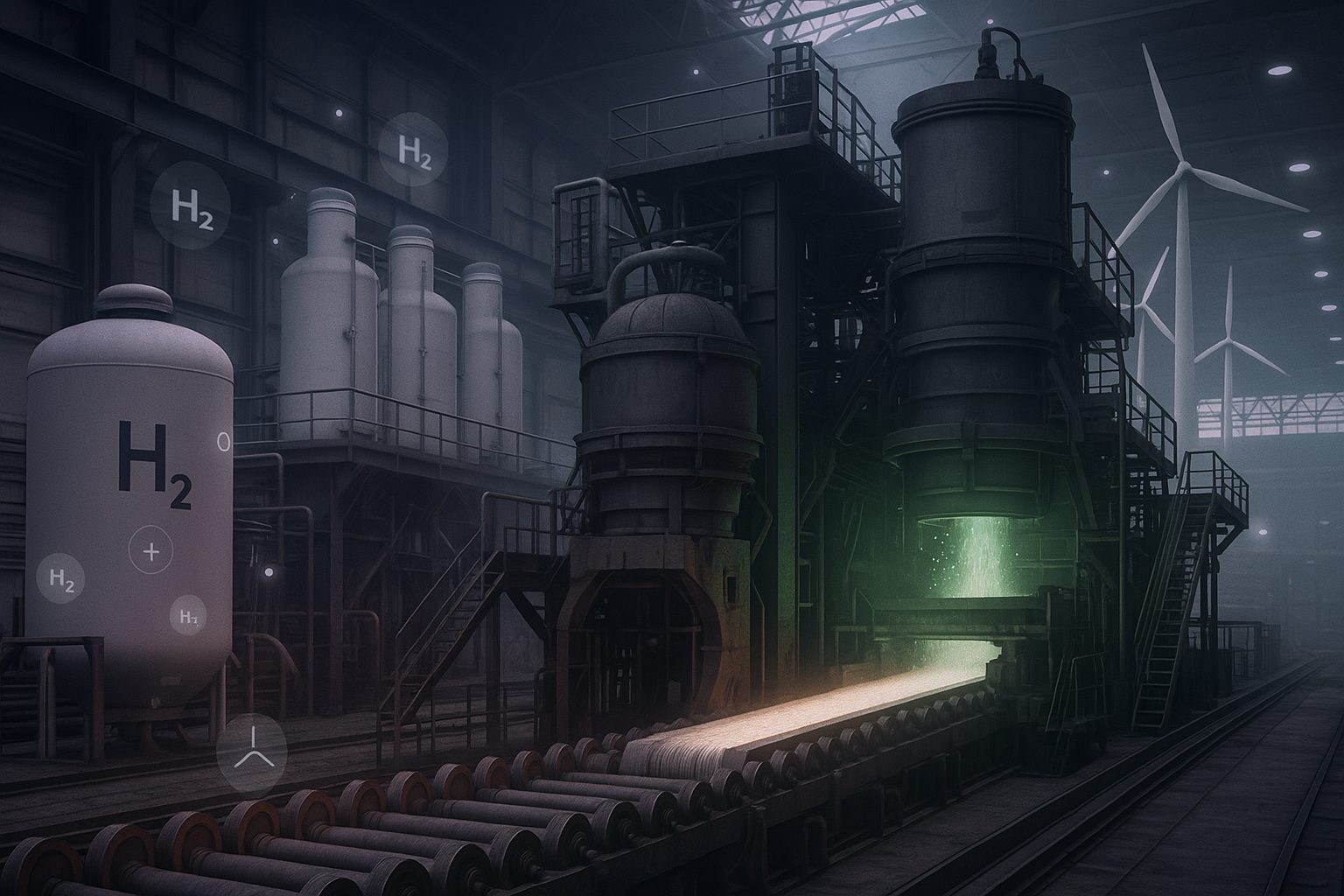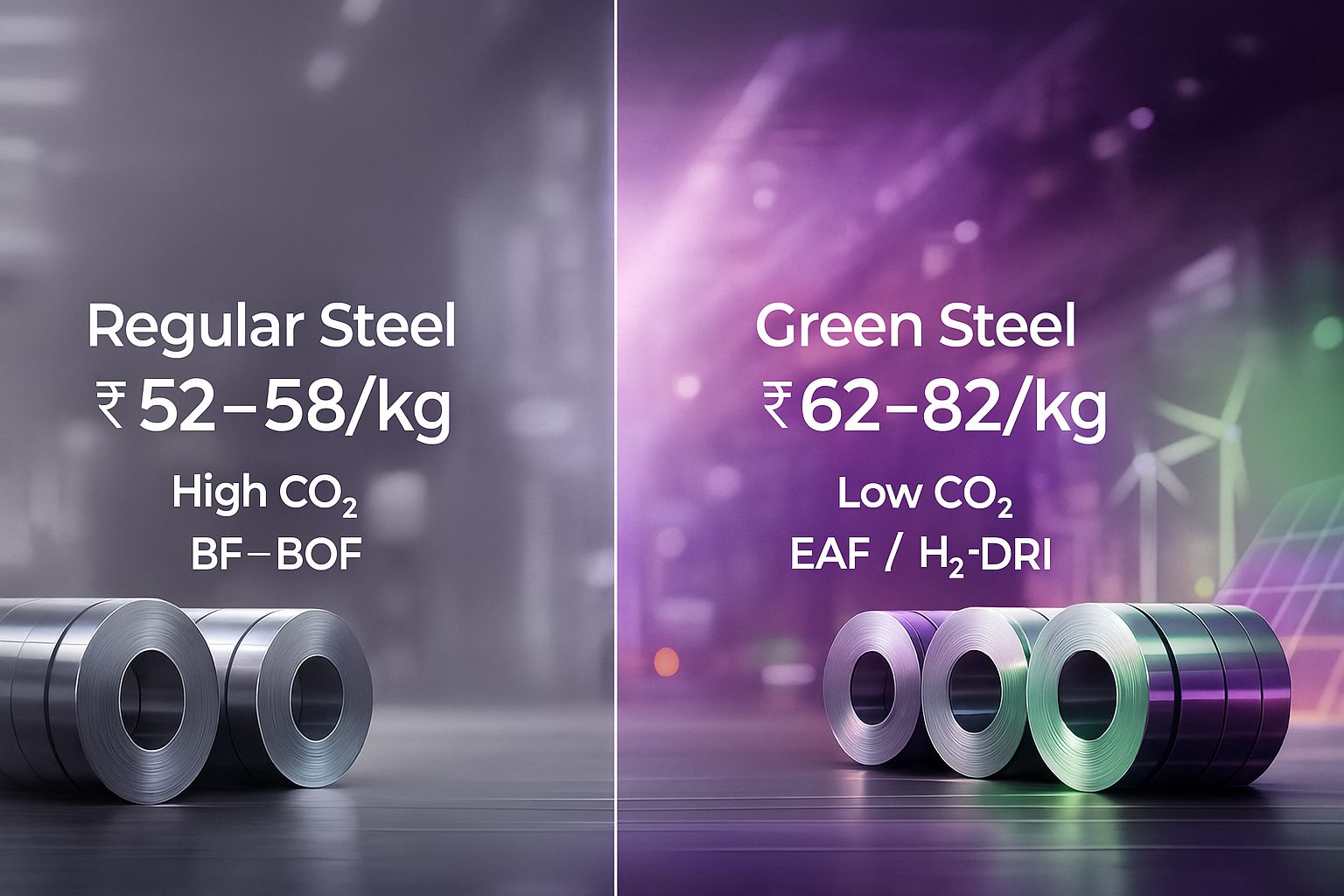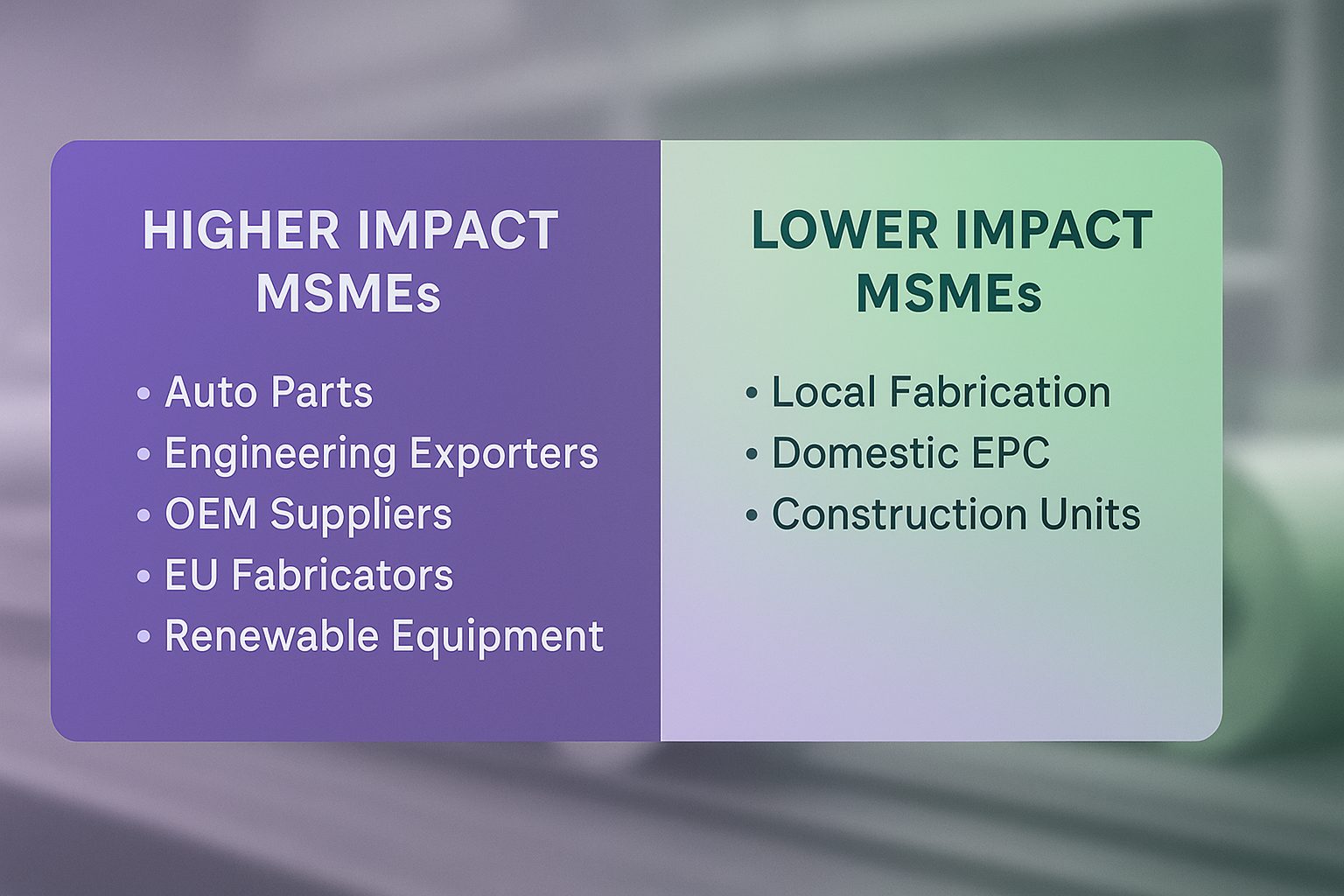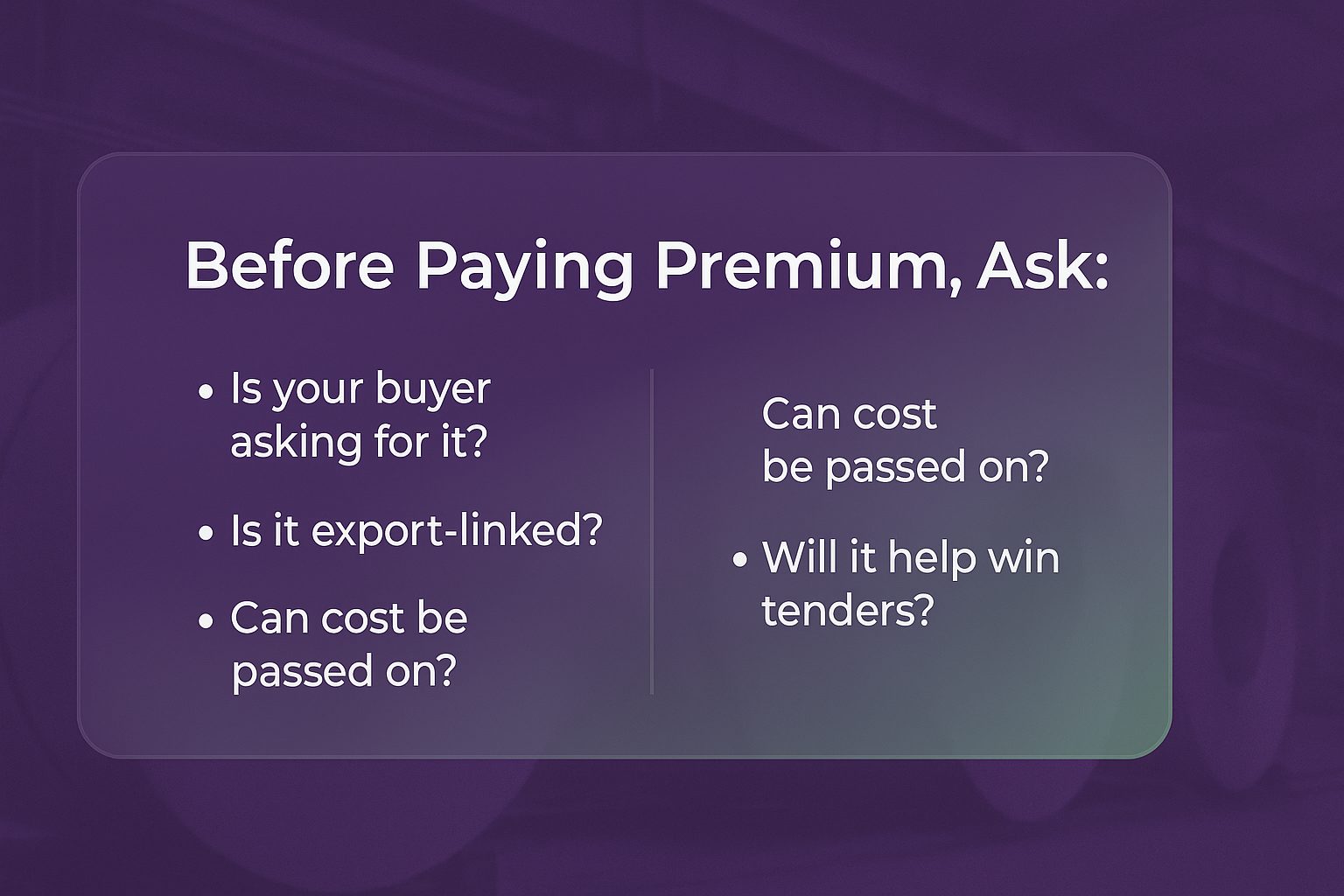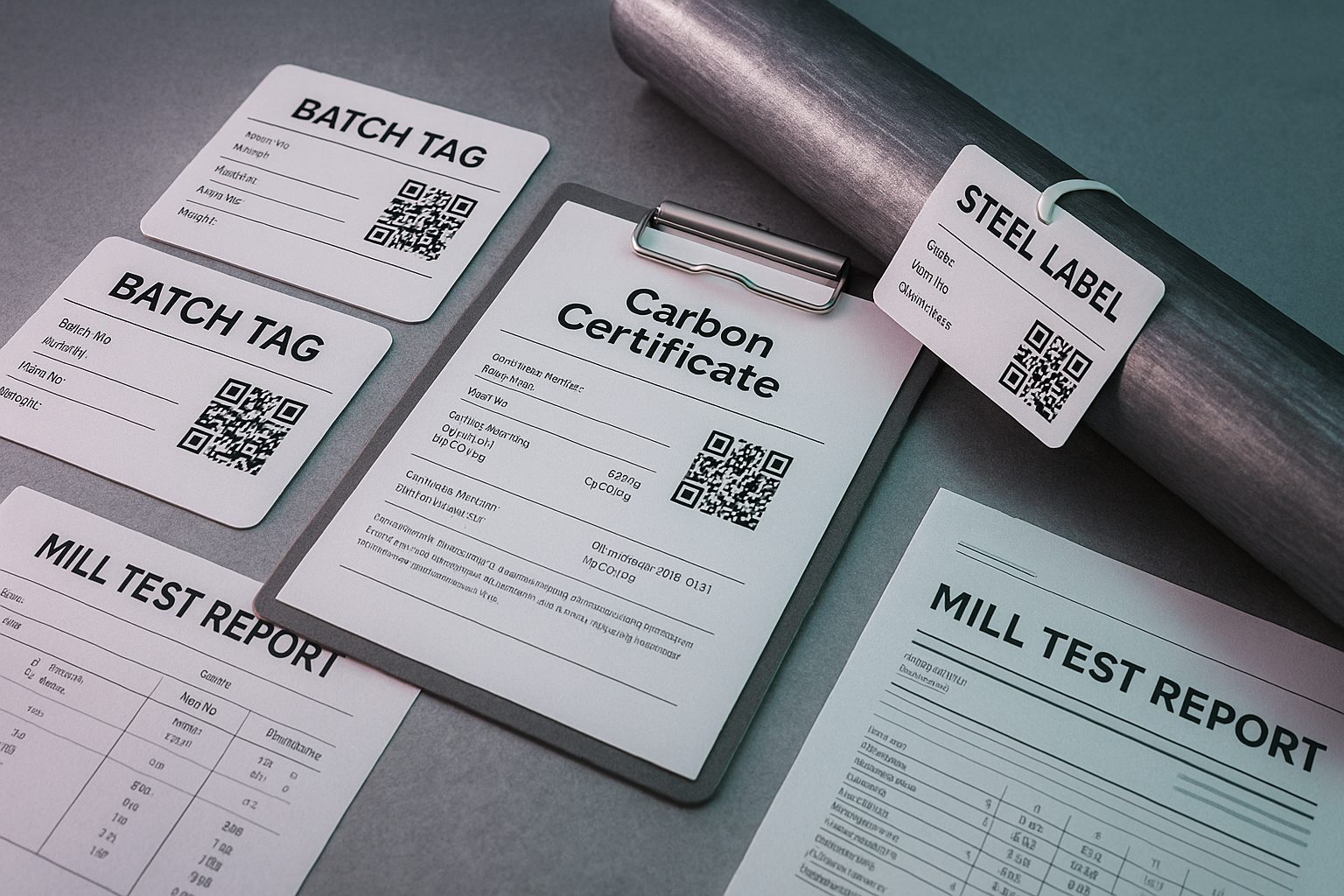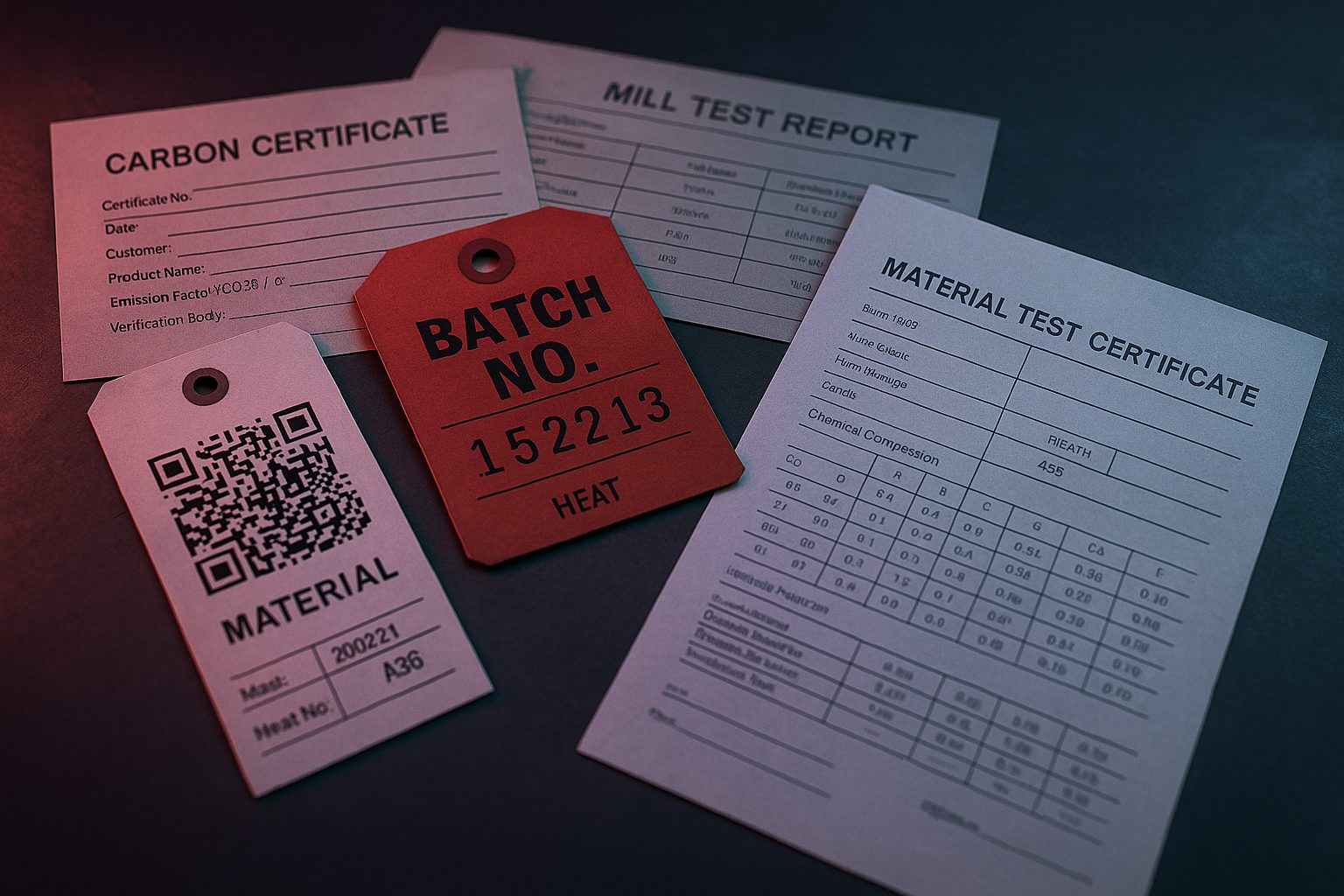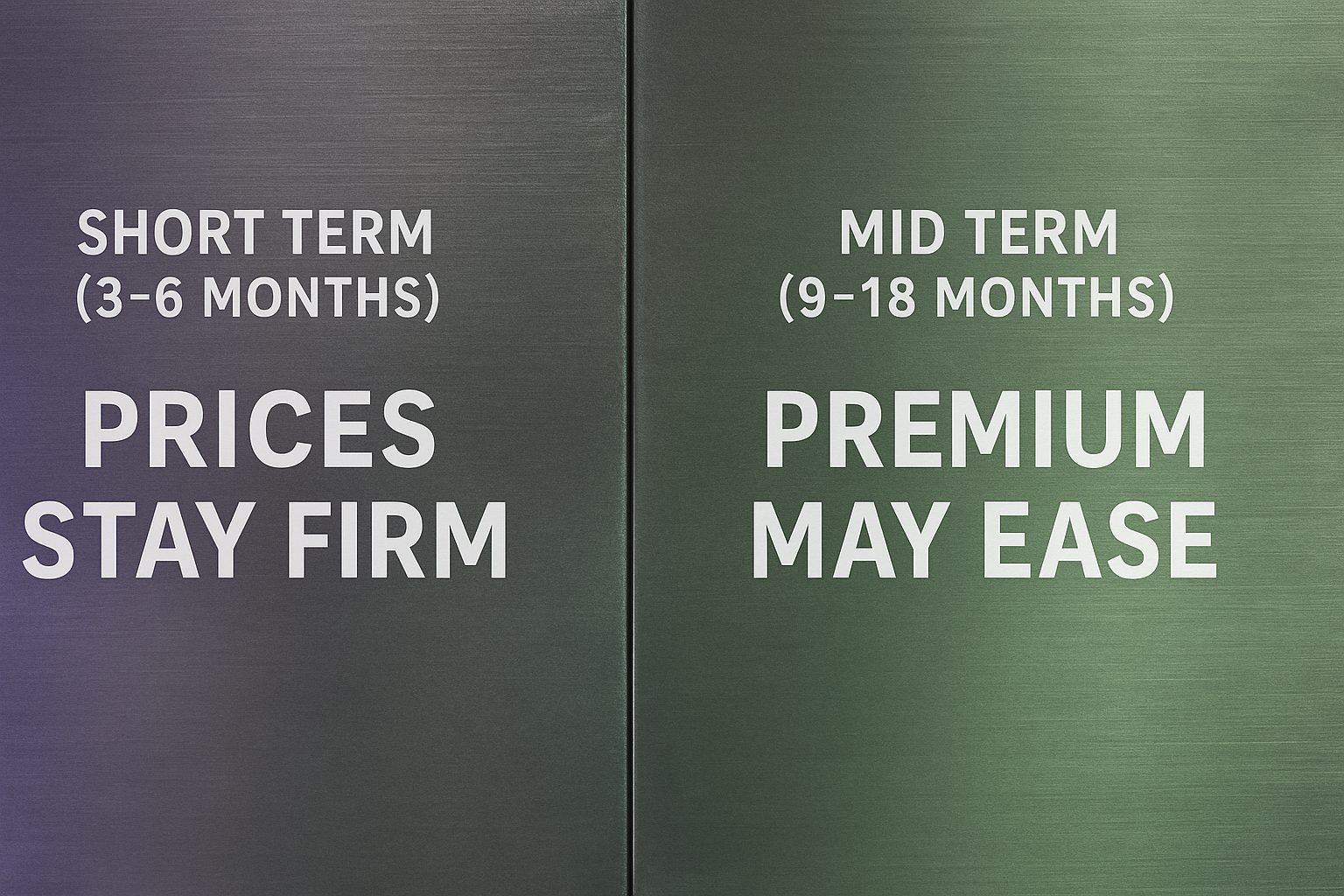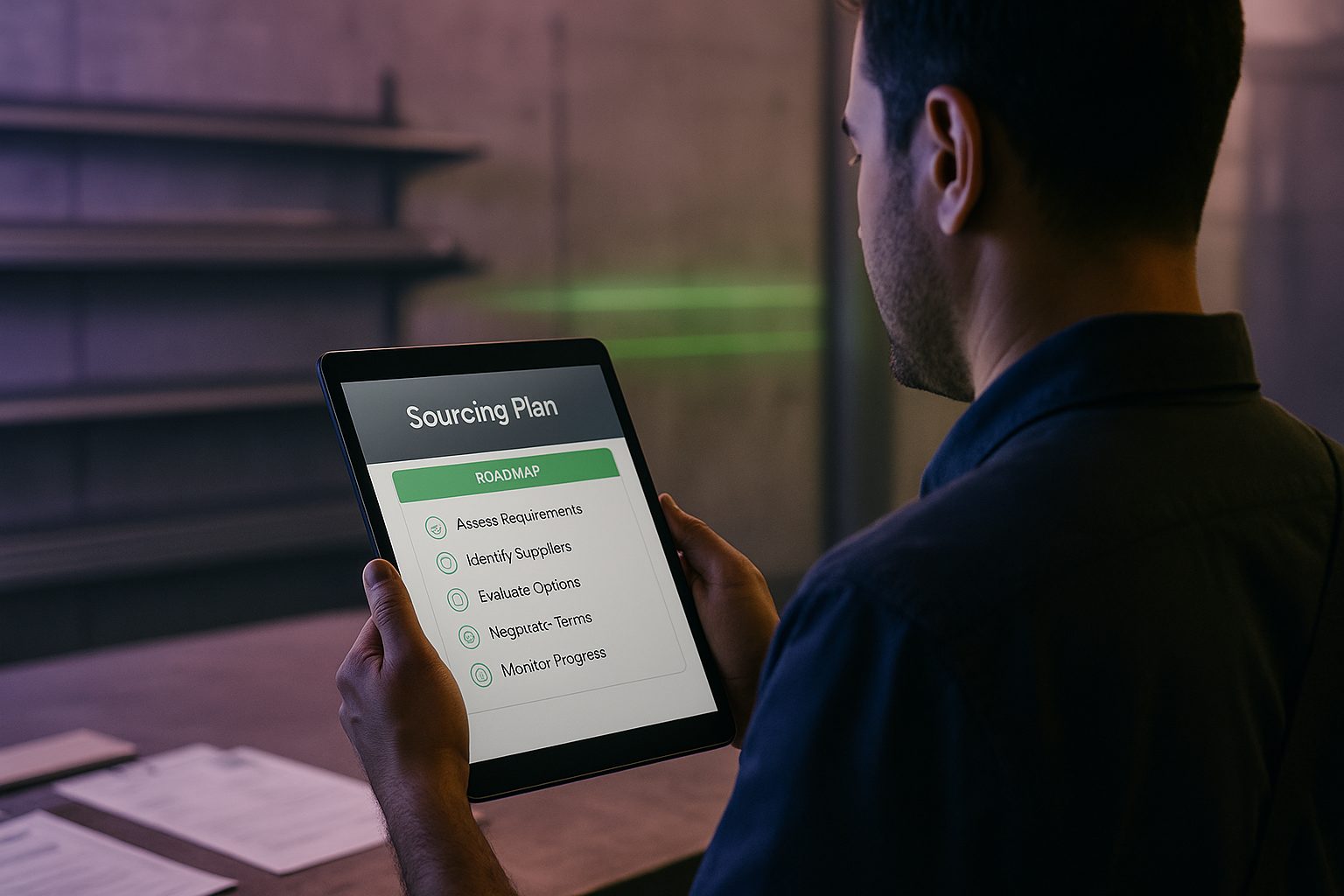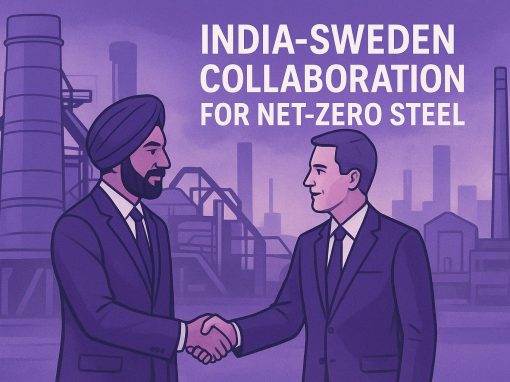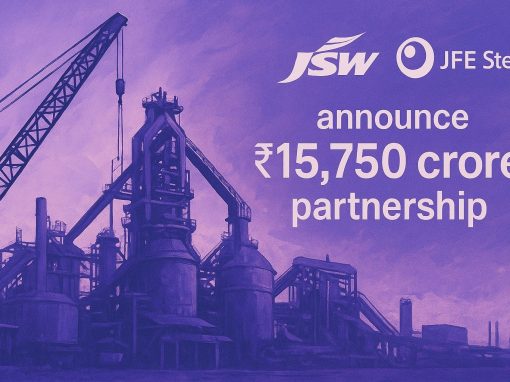Table of Contents
- Introduction: Why green steel matters in 2025
- What is green steel and why does it cost more
- Green steel vs regular steel: Price and value comparison
- Which MSMEs are most affected
- Should MSMEs pay the green steel premium
- How MSMEs can reduce the cost impact
- India’s green steel push – what’s coming
- Sourcing green steel: What MSMEs must verify
- Risks of paying premium without due diligence
- How green steel prices may move in the coming months
- Conclusion
- FAQs
Introduction: Why green steel matters in 2025
For years, green steel was discussed only in boardrooms, sustainability reports, pilot projects, and so on. And most of the SMEs saw it as a costly, niche alternative with little relevance to everyday sourcing.
But 2025 has changed the equation.
And demand is rising fast which is driven by stricter ESG norms, global buyer mandates, new export rules, etc. green steel has moved from “optional” to “expected” across several supply chains. Auto, engineering, renewable energy and export-linked sectors are already feeling the shift.
At the same time, prices of green steel have surged, now sitting 15-40% higher than regular steel depending on grade, hydrogen intensity and certification. This widening premium is causing confusion among MSMEs:
Should you pay extra? Will buyers demand it? Is the cost justified?
Or is it better to wait?
Adding to this, hydrogen-based DRI producers in Europe and Japan have recently signalled upward pricing pressure due to rising renewable energy costs and tighter carbon compliance rules – further contributing to global market volatility.
This guide today helps MSMEs take informed, commercially sound decisions – where to pay premium, when to negotiate, and how to avoid overpaying.
What is green steel? And why is it more expensive?
Green steel refers to the steel which is produced with significantly lower carbon emissions when compared with traditional blast furnace (BF–BOF) routes. However, the final product may look the same, still the production process is fundamentally different. Thus, making it cleaner, traceable, and compliant with the sustainability expectations of global buyers.
What makes steel ‘Green’
- Hydrogen-based reduction instead of coal
Like traditional steelmaking which entirely relies on coking coal to reduce iron ore. Green steel, on the other hand, replaces this with hydrogen. This, as result, emits only steam instead of CO₂ during the reduction process. - Electric Arc Furnace (EAF) powered by renewable energy
EAFs run on electricity, and when powered by solar or wind, the carbon footprint drops sharply. - Scrap-based steel with strict ESG traceability
Some green steel is made through high-quality scrap melting – but what makes it “green” is the verified traceability, documented carbon intensity, and independent audits. - Lower carbon intensity” certificates
Certified mills provide clear documentation showing emissions as low as 1–0.4 tCO₂ per tonne, far below the ~1.8–2.2 tCO₂ from conventional methods.
Must read: India Unveils New Taxonomy for Green Steel: Sustainability in 2025
Why green steel costs more
Despite its environmental benefits, green steel prices remain costlier today due to structural and technological factors:
- High hydrogen production cost
Producing green hydrogen (via electrolysis using renewable power) is still expensive, and energy-intensive. This remains the largest cost driver in green DRI routes.
- Higher EAF energy requirements
Running Electric Arc Furnace (EAFs) on clean electricity pushes operating costs higher. But, it especially occurs in areas where renewable energy tariffs are leading to rise.
- Certification and compliance expenses
Ensuring low-carbon certification, third-party audits, and ESG documentation adds to mill overheads.
- Limited global supply
Only 7–8% of global steel qualifies as “green” today. Limited supply means prices naturally stay elevated.
- Heavy transition investment
Mills that are transitioning to hydrogen-based DRI must invest in new reactors, electrolyser capacity, storage infrastructure, ESG systems, and so on. And the increased costs, as a result, partly passed to buyers.
Also read: Green Steel Incentives: Eligible Companies and MSME Impact
Green Steel vs Regular Steel: Price and value comparison
For MSMEs, the main question is whether the higher price of green steel brings any real business benefit. The difference becomes clear when we compare both materials side by side – on cost, compliance, and long-term value.
Price and value snapshot (Nov 2025)
|
Green steel does cost more, but the emissions reduction is significant. For MSMEs linked to exports or large OEM supply chains, this difference is more than a technical detail – it affects vendor eligibility, compliance checks and the ability to participate in long-term projects.
For businesses focused only on domestic function, the benefit is less direct. And they may not need full green steel for every order, but a blended approach often works better. In addition, limited supply also means lead times can be longer, specifically for HRC and CRC.
Which MSMEs are most affected?
The rise in green steel prices is not hitting every business in the same way. That said, some businesses are already facing pressure from buyers to shift to low-carbon materials. Apart from it, still many MSMEs have the flexibility to continue with regular steel. Understanding which are the businesses that most impacted will help you plan better and avoid paying a premium when it is not required.
Industries feeling the most pressure
- Auto component makers
OEMs, especially in EV and export programs, have started asking suppliers to show lower carbon footprints. Many vendor approvals now include carbon-related checks. - Engineering exporters
Companies sending parts or fabricated items to Europe, Japan or the US must meet strict documentation requirements. Green steel helps avoid delays or compliance issues. - Tier-2 and Tier-3 suppliers
Several large manufacturers are passing sustainability requirements down the supply chain, even if they haven’t made a formal public announcement yet. - Fabrication units linked to export projects
Renewable energy structures, heavy engineering and similar projects often expect low-carbon steel from their suppliers. - Renewable infrastructure suppliers
Wind towers, solar structures and hydrogen-related equipment increasingly prefer low-carbon inputs.
Industries with lower immediate impact
- Local fabrication shops
Units making gates, sheds, grills or other domestic-use structures are not expected to shift to green steel right now. - Domestic EPC contractors (non-green tenders)
If a project does not ask for ESG or carbon reporting, regular steel remains acceptable. - Construction-focused MSMEs
Most civil construction work in India does not require green steel at this stage.
Should MSMEs pay the green steel premium? Key questions to ask
Paying 15–40% extra for green steel is a major decision for any MSME. For some businesses, it is necessary for staying eligible for orders. For others, the premium does not create any direct benefit. Before committing, it helps to step back and check a few basics.
- Is your buyer asking for low-carbon steel?
If your OEM, export customer or EPC client clearly requires certified low-carbon material, the premium is unavoidable. Many auto and engineering companies have already moved in this direction. - Is your product linked to exports or EU supply chains?
Under CBAM and similar rules, buyers need proper carbon data. Green steel reduces the risk of penalties, delays or rejection. - Will it improve your chances in larger or long-term tenders?
Some government, PSU and multinational contracts now include sustainability points in qualification. Using green steel can help strengthen your bid. - Can you pass the extra cost to your customer?
In case when pricing is cost-plus or your buyer supports sustainability, the premium may be recoverable. If not, it directly affects your margin. - Does it support your company’s ESG or compliance goals?
If you plan to build ESG documentation or move up the value chain, green steel can help you present a stronger profile. - Are there any incentives available?
Some MSMEs benefit from better financing terms, sustainability-linked credit, or recognition from OEMs, which can offset part of the premium.
In short, the premium makes sense when it protects revenue, avoids compliance risks, or helps you win business – no when it adds cost without any clear requirement.
How MSMEs can reduce the green steel cost impact
Green steel is expensive today, but MSMEs don’t always need to absorb the full premium. With the right sourcing and planning approach, the cost can be managed or reduced.
Here are some practical steps that work well in business situations.
Buy blended lots instead of going 100% green
Many OEMs accept a mix of green and regular steel as long as the green portion is properly documented. Using a 10–30% blend helps meet requirements without pushing up overall material cost too much.
Negotiate longer-term contracts
Monthly pricing tends to fluctuate with hydrogen costs, scrap availability and energy rates. Locking in a 6-12 month contract with a mill or service centre can help keep the premium stable.
Freeze prices early for export orders
If your customer has confirmed the specifications, try to fix the steel price before production starts. This protects your margins in case the premium rises later – something that has happened often through 2024–25.
Explore domestic green steel suppliers
Indian mills are scaling green DRI and renewable EAF routes. And hence, buying locally can help lower logistics cost, shorten lead time and sometimes also offer better pricing than imports.
Use available ESG or sustainability-linked incentives
Some banks and NBFCs offer better terms for companies that buy certified low-carbon material. A few OEMs also run supplier recognition or support programmes.
Strengthen your traceability process
If you are using green steel, mismatched paperwork can lead to compliance issues or rejection. A simple internal system that tracks batches and documents can prevent costly mistakes.
These steps help MSMEs stay compliant and competitive without taking on the full burden of rising green steel prices.
India’s green steel push – What’s coming
In India, the shift toward low-carbon steel is already in motion. However, large-scale hydrogen-based production will take time, but, several developments in 2025 show that the ecosystem is moving in the right direction. These changes will gradually improve availability and reduce the premium MSMEs face today.
SAIL is running early-stage low-carbon trials
SAIL has started pilot work using more scrap, renewable-powered EAF routes and small hydrogen-blended processes. The volumes are still limited, but it signals a long-term shift.
JSW is testing hydrogen-based DRI
JSW’s trials at Vijayanagar focus on using hydrogen-rich gas blends for ironmaking. These trials will help the company plan bigger installations over the next few years.
Learning from Tata Steel Netherlands
Tata Steel’s plant in the Netherlands is undergoing one of the most advanced transitions to hydrogen-based steelmaking. The lessons from that project are expected to influence Tata’s future operations in India.
Scrap-based EAF capacity is rising
India is expanding its scrap processing and EAF capabilities, which will help increase the supply of low-carbon steel at better prices.
Strong push for green hydrogen
Under the National Green Hydrogen Mission, investments in electrolysers, hydrogen hubs, renewable corridors, etc. are increasing swiftly. Also, as hydrogen becomes more affordable, green steel costs will come down.
Possible policy support
There are ongoing discussions about incentives for low-carbon steel production. If introduced, such schemes may help mills reduce the cost gap between green and regular steel.
For MSMEs, these developments mean better availability, more local options and a gradual reduction in premium over the next few years.
Sourcing green steel: What MSMEs must verify
With green steel becoming more common in OEM supply chains and export orders, the paperwork behind it has become just as important as the material. There are many suppliers now who offer “low-carbon” or “green” steel, but not all of them meets the standards required by global buyers. Before paying a premium, businesses must check the below points to avoid mistakes or compliance issues:
- Always review the carbon intensity certificate to confirm emissions per tonne, the production method used, etc. Even you should check whether a recognised agency has verified the data.
- Do remember to check that the supplier has clearly stated how the steel was made. Is it hydrogen-based DRI, renewable-powered EAF, or certified scrap-based steel?
- Make sure the supplier can provide complete traceability. It include, heat numbers, batch details, production route, and the method used to calculate carbon emissions.
- Confirm that each coil, sheet, or section carry a proper batch identification like mill markings, batch numbers, QR codes linked to the documents, etc.
- Verify that the steel is genuinely low-carbon and not conventional BF material. That is being sold under a “green” label.
- If you supply to export markets, ensure that the documentation aligns with OEM or EU compliance requirements, especially for CBAM reporting.
- Always ask for third-party verification. And it must be from recognised bodies such as TÜV, DNV, BSI, SGS, Bureau Veritas, etc.
- Avoid suppliers who cannot provide batch-specific carbon data or who rely only on generic certificates.
- Cross-check that batch tags, test certificates, and carbon reports match exactly to prevent rejection during buyer audits.
- Review the mill’s sustainability declaration to verify it includes energy mix details, ESG commitments, recognised reporting formats, etc.
- Do confirm that any renewable energy claims are based on actual plant usage. And not on estimated/ offset-based numbers.
- Each time check if recycled-content claims meet the standards expected by your buyers. Also note it must be checked in case of export-linked supply chains.
- When buying blended lots, always confirm that only the certified low-carbon portion is marked and hence documented as green steel.
- Be cautious of traders who provide green steel without clear mill-issued documents or independent verification.
- Always verify that all certificates follow the formats required by OEMs/ international customers. And, can be shared quickly at the time of audits.
- Make sure that the supplier can always provide the same level of documentation for future orders to maintain consistency.
- Do confirm that any “carbon neutral” claims are backed by real production data and not just carbon credit adjustments.
- Before finalising the order, check all documents corresponds to the exact grade, thickness, and batch being supplied.
Risks of paying premium without due diligence
Green steel is expensive, and the premium only makes sense when the material is genuine. Many businesses end up paying more than required because they don’t check the basics. A few common issues keep coming up in the market.
Unreliable/Fake certificates
Some suppliers share certificates that look fine at first glance but have nothing to do with the actual batch delivered. A few even issue documents from agencies no one recognises. These problems usually show up only when the buyer asks for a detailed audit, and by then the material has already been used.
Regular EAF steel sold as “green”
Another issue is regular EAF or scrap-based steel being sold as “green.” On paper it may sound convincing, but without proper proof, it carries no advantage with OEMs or export customers. The premium paid in such cases is simply a loss.
Missing/ incomplete carbon data
There are also situations where traders don’t have any carbon data at all. They promise to “arrange it later,” which rarely works out and leads to delays or rejections when the customer asks for clear numbers.
Buying green steel when the customer hasn’t asked for it
A lot of MSMEs also buy green steel even when their customer has not asked for it. This ties up money unnecessarily and puts pressure on cash flow – especially because green steel prices move quickly.
Document mismatches
Small mismatches in paperwork are another headache. If batch tags, test certificates and carbon documents don’t align, export buyers usually hold the shipment until everything is corrected.
Most of these problems can be avoided by slowing down the purchase slightly, checking the documents properly, and confirming the requirement with the customer before paying anything extra.
How green steel prices may move in the coming months
Green steel prices have moved a lot over the past year, and many MSMEs want to know what to expect next. While exact numbers are hard to predict, the overall direction for the coming months is clearer now.
Short term (next 3-6 months)
Prices are expected to stay firm. Hydrogen costs remain high, scrap supply is tight, and mills exporting to Europe and Japan are facing stricter carbon rules. These factors keep the premium elevated and can cause small price jumps from time to time, especially for EAF-based material.
Medium to long term (9-18 months and ahead)
The situation should start improving slowly. More Indian mills are adding scrap-based and renewable-powered capacity, and hydrogen trials are progressing at a few large plants. As domestic supply grows, the premium between green and regular steel is likely to reduce.
Over the longer run, the trend will depend on two things – how quickly hydrogen becomes cheaper and how strongly export markets push for low-carbon materials. Both will shape where prices settle.
Conclusion
Green steel comes at a higher cost today, but it also opens doors that regular steel cannot. For some MSMEs – especially those linked to exports, OEM supply chains or long-term projects – the premium is necessary to stay eligible for business. For others, it makes sense to use only small quantities or wait until prices settle.
The key is to buy green steel with a clear purpose. When the requirement is documented, the customer expects it, or the order depends on it, the premium is justified. And when none of these apply, then there’s is no need to rush. Thus, it can be said that taking a balanced approach helps MSMEs stay compliant, control costs and plan for the future as India’s green steel ecosystem grows.
Looking to procure steel?
Tata nexarc helps manufacturers, builders and MSMEs source certified steel products, compare prices, and choose the right grade as per IS codes—with complete traceability and procurement confidence.
FAQs
Does green steel require separate storage or handling?
Can MSMEs book green steel on a per-lot basis?
Is the premium the same across all grades?
Does green steel affect machining or fabrication processes?
Does green steel guarantee easier export approvals?
Are green steel delivery timelines longer?
Does green steel require additional testing?
Can MSMEs buy green steel through online B2B platforms?
Is the premium expected to disappear completely in future?
Charul is a content marketing professional and seasoned content writer who loves writing on various topics with 3 years of experience. At Tata nexarc, it has been 2 years since she is helping business to understand jargon better and deeper to make strategical decisions. While not writing, she loves listing pop music.


